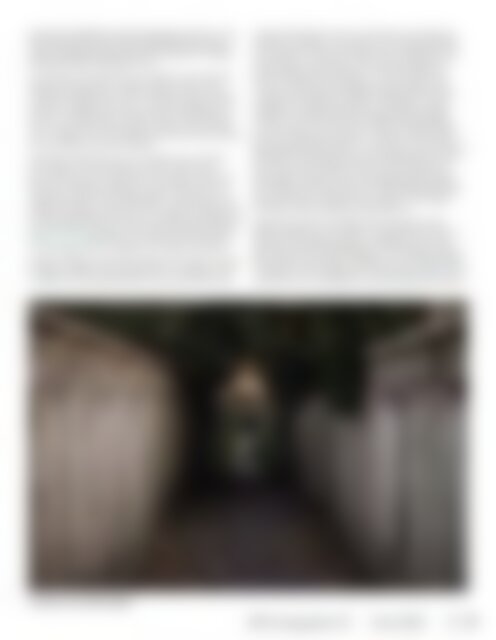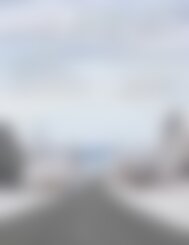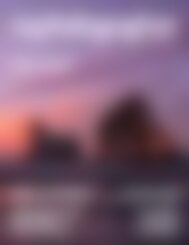NZPhotographer Issue 55, May 2022
As of December 2022, NZPhotographer magazine is only available when you purchase an annual or monthly subscription via the NZP website. Find out more: www.nzphotographer.nz
As of December 2022, NZPhotographer magazine is only available when you purchase an annual or monthly subscription via the NZP website. Find out more: www.nzphotographer.nz
Create successful ePaper yourself
Turn your PDF publications into a flip-book with our unique Google optimized e-Paper software.
get both the reflection and the background in focus. Joe<br />
has chosen just to have what is within the mirror in focus<br />
which is appropriate because the background is foliage.<br />
Friedlander kept everything in focus.<br />
To achieve a shot like this, you need to look at focal<br />
length and aperture. A large aperture (low f stop<br />
number) will generally mean a shallow depth of field<br />
where the subject is in focus, and the background is<br />
blurred. A deep depth of field means everything is in<br />
focus, and usually, that means a high f stop number.<br />
Joe’s image is on the shallower end which also means<br />
he was quite close to his subject.<br />
Using the world around you is a great way to frame<br />
your subject. Look through your lens and move it<br />
around to see if you can frame your subject with tree<br />
branches, foliage, buildings, or even fence posts, as<br />
Andie has done in the image below. Looking out at a<br />
subject through a window or door is also a natural way<br />
to frame something, and if you can get the foreground<br />
and background in focus like Yasuhiro Ishimoto does in<br />
his Katsura Villa portfolio, you add an extra dimension<br />
to the image with an image full of depth and layers.<br />
Andie’s image sits near the shallow end when it comes<br />
to depth of field. If she had shot this on a higher f stop<br />
number and increased the ISO, she would have had<br />
more of the fence in focus, but this was not what she<br />
wanted to achieve, so she shot with a wider aperture<br />
and sought to frame her subject by the foliage. It also<br />
comes down to your lens. If you are shooting with a<br />
landscape lens like the Nikon or Canon lenses that<br />
have a 10-20mm focal length, you will usually have<br />
a short focal length and deeper depth of field versus<br />
a telephoto lens like the Tamron 150-600mm, which<br />
will allow you greater distance but shallower depth<br />
of field. If you think about the wildlife photographers<br />
you have seen out and about, they are often hefting<br />
enormous telephoto lenses. In contrast, a landscape<br />
photographer often sports a sturdy tripod and a shorter,<br />
fatter lens. Andie did not have a landscape lens and<br />
may have found it difficult without one to get all of<br />
this image in sharp focus just by adjusting her settings.<br />
That being said, I like the blur and the leading lines the<br />
fences and path provide to her subject. The foliage<br />
provides a lovely vignette-style frame too.<br />
Lastly, let’s look at an image I shot last year for the<br />
Kāpiti College show Chicago. The performers were at<br />
the back of a deep stage on scaffolding, and I was<br />
right at the back of the theatre. I was shooting with my<br />
favourite lens, the Nikkor 70-300mm, on my Nikon D850.<br />
I needed a wider angle lens at the time but didn’t have<br />
one with me, so I decided to use the shadow to frame<br />
Adventures by Andie Hughes<br />
<strong>NZPhotographer</strong><br />
<strong>May</strong> <strong>2022</strong><br />
39

















